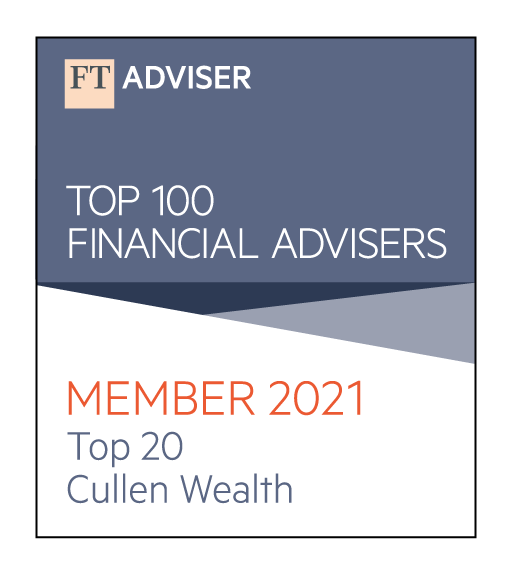Introduction
The Fed cut interest rates in September which, despite the Bank of England holding at 5%, is now expected to be the direction of travel for much of the developed world as it returns to some form of financial normality into 2025. China’s financial stimulus was another big story in September, as it was their biggest intervention since Covid, and markets responded favourably, especially in Asia.
UK
The Bank of England, which cut rates earlier this year, kept rates at the same level as inflation had crept up very slightly in recent months. Governor, Andrew Bailey, is maintaining his line that rates will come down but gradually, and not to the near zero levels which we saw four years ago. Many observers expect another cut later in the year, assuming inflation does not continue to rise.
Inflation held steady in the year to August, at 2.2%. This is the same rate as the 12 months to July, and just ahead of the Bank of England’s target of 2%.
Air fares, especially to Europe, lead the price rise. Rents were also up. However other areas were down, including fuel, restaurants and hotels, and shop bought alcohol.
The Labour Party Conference in Liverpool, the first since the election, dominated government headlines. Chancellor Rachel Reeves tried to add some optimistic notes to counter the gloomy mood of recent speeches, and that has been helped by the improved growth projections from at least one notable think tank, The Organisation for Economic Co-operation and Development (OECD). In May, the OECD had put UK expected growth at 0.4% for this year, but now expects it to grow by 1.1%, the same rate as Canada and France, but behind the US.
In contrast, data published by the Office for National Statistics in September showed UK’s economic growth to date was weaker than initially anticipated. The UK’s gross domestic product expanded by 0.5% in the second quarter compared to the first, slower than the ONS’s first estimate of 0.6%. This also was slower than 0.7% in the first quarter.
There is considerable speculation about what the 30th October budget holds between now and its unveiling, with some likely changes to the current fiscal and monetary policies.
Europe
Whilst European stocks fared reasonably well in September, concerns remain about the underlying strength of European economies. So whilst the STOXX 600 hit record highs, the real catalyst was the series of stimulus measures from China to revive its economy. More on this later.
Eurozone data in September showed services flatlined and manufacturing continued to decline. This is an ongoing trend for Germany, the Eurozone’s biggest economy, and an unwelcomed return to contraction for France, which had experienced an improvement after August’s successful Olympics. European equities have performed well despite political noise, and the dominance of the US tech stocks globally, for the past 12 months, however there will be concerns about the future economic growth.
The European Central Bank (ECB) cut interest rates by 0.25% to 3.50%. The Euro has also fallen sharply in anticipation of further interest rate cuts. Christine Lagarde, President of the ECB, has indicated more cuts will come with improving inflation figures, but they are not expected to change in October.
United States
The US election remains unavoidable with Trump and Harris both fighting for votes in the major battleground states in September. Economic competence is a major issue for Harris, and Trump has been shown to score higher with voters on this key topic. She continues to chip away at her opponent on this issue but is also having to work hard to rebut Republican claims that she supports ‘communist’ policies.
The Fed dropping interest rates by a full 0.5% was a notable moment in September. It was expected but welcomed all the same given concerns about the US labour market. It is expected that the US will add another 140,000 jobs in September and unemployment will rise to 4.2%. If there are significantly fewer jobs, and the unemployment rate exceeds 4.3%, there will undoubtedly be concern that the Fed has acted too late. Further cuts are expected regardless but a weaker than expected labour market will prompt demands for another 0.5% cut. A payroll report due early October will influence opinion on this issue.
September is historically regarded as the worst performing months for US stockmarkets. The average return from the S&P500 since 1950 is -0.5%. It’s the only month with such a consistent loss making record. This is probably due to a combination of factors – the end of slower summer months trading, tax loss harvesting by investors, and a focus on the end Q3 corporate results – but nobody can quite put a finger on it.
So whilst September has seen some volatility in the stockmarket, which we can blame on a variety of current affairs such as the election, unemployment rates and inflation, it is not unusual for this month.
Far East
China boosted markets with a bold and clear statement from the politburo, led by President Xi Jinping, to intensify fiscal support for its economy, the second largest in the world.
Analysts have been concerned for some time that China will miss its own economic targets and even spiral into deflation. The primary target of the fiscal support has been China’s struggling property market but Chinese stocks instantly spiked as investors also bet on increased state support for equities.
The good news washed through into European markets. Frankfurt’s Dax gained 1.2 per cent, and Paris’s Cac 40 quickly jumped 1.4 per cent as soon as the stimulus was announced. These two niche markets are dominated by the automotive and luxury sectors respectively and so both are heavily exposed to China.
Japan’s Nikkei index dived at the end of September amidst concerns that incoming new president, Shigeru Ishiba, was at odds with the Bank of Japan’s current monetary policy especially around interest rates. He quickly moved to allay concerns but as he forms his new government in October and has called for a snap general election later in the same month, there is likely to be some uncertainty for some time to come.
Emerging Markets
Services inflation remains a concern, but most emerging market central banks have continued to cut interest rates. The broader inflation figures show a gradual movement towards central bank targets which, as with other parts of the world, has underpinned monetary policy. Interest rates have been reduced by 0.25% recently in Chile, the Philippines, the Czech Republic, and Mexico.
Brazil is the main exception. Brazil’s central bank raised its rate to 10.75% on September 18, reversing a trend of cuts which started mid-2023. Brazil’s currency depreciated by 13% against the U.S. dollar from the start of the year to September 17.
Mexico seems likely to cut rates somewhere between 0.5% and 1% this year, but they are already high, and this would still leave them around 9.75% to 10.75%, with inflation in August still at the high end of targets at 4%.
Conclusion
Interest rate normalisation continues to be the key global economic theme, with the ongoing threat of war in the Middle East adding persistent political uncertainty.
China’s financial stimulus has had a short term positive impact on markets, but there will be pressure on China to use this to their long term benefit and there is some scepticism that this will bring them back in line with their aggressive economic targets.
For all the noise, and especially with a new budget about to be announced, investors have plenty to be positive about over the past year. There will undoubtedly be some changes to consider in the upcoming budget which may impact your plans and strategies. We will be on hand to provide comment and further guidance as soon as we know the details and how it impacts you. Please reach out to your usual Cullen contact if you have any queries or concerns.
And Finally…
Did you know that the Eiffel Tower was originally intended for Barcelona?
The Spanish city initially thought that it was too ugly, so the creator, Gustave Eiffel pitched it to Paris instead. French critics were initially not fond of the Tower, but it’s now one of the most famous landmarks in the world.





